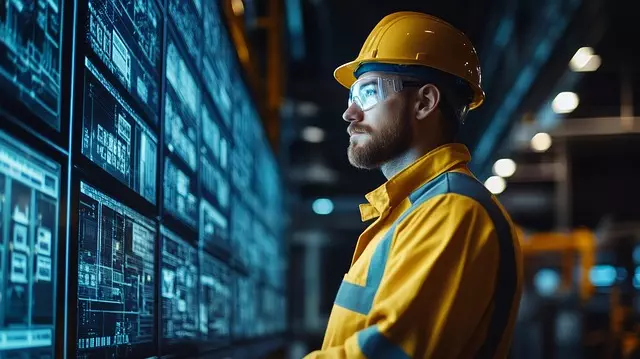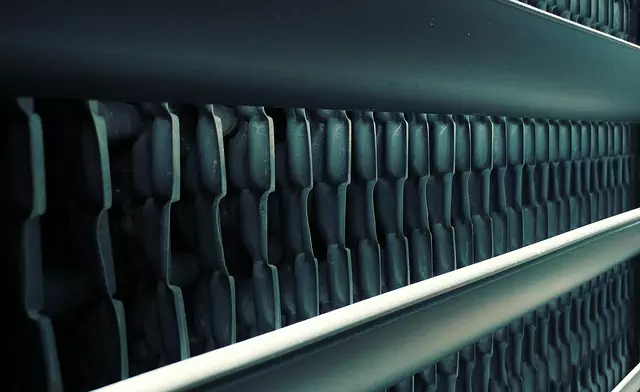Industrial ventilation systems are crucial for maintaining workplace air quality and worker health by controlling and eliminating hazardous airborne contaminants. Effective ventilation involves strategic placement of vents, fans, and ductwork, adhering to safety standards especially in industries with airborne particles, gases, or vapours. Regular assessments, tailored system design, proper maintenance, and timely upgrades ensure employee comfort and protect health while meeting ventilation safety standards, fostering a culture of safety and environmental stewardship.
Ventilation is a cornerstone of workplace safety and critical for maintaining optimal air quality in industrial settings. This article delves into the intricate world of industrial ventilation systems, exploring their pivotal role in ensuring healthy workplaces. We navigate the essential ventilation safety standards, providing insights on creating and upholding effective systems. From understanding complex regulations to practical implementation, this guide equips readers with knowledge to optimize air quality management, fostering safer and more productive work environments.
- Understanding Industrial Ventilation Systems: Their Role in Workplace Air Quality Management
- Navigating Ventilation Safety Standards: Ensuring a Healthy Work Environment
- The Permitting Process: How to Implement and Maintain Effective Ventilation Systems
Understanding Industrial Ventilation Systems: Their Role in Workplace Air Quality Management
Industrial ventilation systems play a pivotal role in maintaining optimal workplace air quality and ensuring worker safety. These sophisticated mechanisms are designed to control, manage, and eliminate hazardous airborne contaminants that may be present in industrial settings. From manufacturing plants to construction sites, these systems work tirelessly to safeguard employees from respiratory issues, chemical exposures, and other health hazards.
Effective ventilation involves the strategic placement of vents, fans, and ductwork to circulate fresh air, dilute harmful substances, and remove contaminated air efficiently. By adhering to stringent ventilation safety standards, businesses can create a healthier, safer working environment. This is particularly crucial in industries where processes generate airborne particles, gases, or vapours that could pose significant risks if not properly controlled.
Navigating Ventilation Safety Standards: Ensuring a Healthy Work Environment
Navigating Ventilation Safety Standards is a critical step in ensuring a healthy work environment, especially in industrial settings where workplace air quality management is paramount. Industrial ventilation systems play a vital role in controlling airborne contaminants, maintaining optimal air pressure, and facilitating efficient heat removal. Compliance with ventilation safety standards not only ensures the comfort of employees but also safeguards their health from potential hazards.
Regular assessments and inspections are crucial to meet these standards. Employers must identify potential sources of contamination, such as dust, fumes, or vapors, and design ventilation systems tailored to mitigate these risks effectively. Proper maintenance and timely upgrades of ventilation equipment are essential practices to uphold workplace safety and adhere to the stringent requirements of ventilation safety standards.
The Permitting Process: How to Implement and Maintain Effective Ventilation Systems
Implementing and maintaining effective industrial ventilation systems is paramount to ensuring workplace air quality management and adherence to ventilation safety standards. The permitting process begins with a comprehensive assessment of the facility’s needs, including identifying sources of contaminants and evaluating existing ventilation infrastructure. This involves collaboration between facility managers, engineers, and local regulatory bodies to ensure all applicable codes and regulations are met. Once approved, installation requires meticulous planning and execution, incorporating specialized equipment like exhaust fans, ductwork, and air filters tailored to specific industrial processes.
Ongoing maintenance is crucial for optimal performance. Regular inspections, cleaning of vents and ducts, and timely replacement of filters are essential components of a robust ventilation safety program. Additionally, monitoring air quality and conducting periodic efficiency tests help identify any system deficiencies, ensuring the continued provision of clean, safe air in the workplace. This proactive approach not only aligns with industry best practices but also fosters a culture of safety and environmental stewardship.


